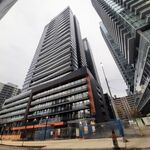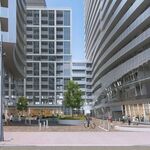View attachment 423946
What would be a way to get more room in these cases? If the road is under capacity it could get a "road diet" treatment. But this is not always possible since many roads are busy. Instead of the city buying more of the land from the property owner to make room, I wonder if there could be an alternative deal worked out...
Purchasing land to increase ROW width is plausbile, but doesn't happen very often, at scale (meaning for an extended stretch of road), its expensive and its a labourious process either negotiating or expropriating from dozens or hundreds of owners over a multi-block/multi-km stretch.
It is much more common to see some ROW expansion when redevelopment occurs; but only if the Transportation Master Plan/Official Plan have identified that need/target, and it tends to occur on an opportunistic, property by property basis.
In the particular stretch you're looking at above, there is a hydro corridor on one side of the road, Mississauga will not have any authority to expropriate from the utility. However, of note, that trail is already there, presumably under some sort of license agreement permitting it.
****
Road diets can take two forms, lane reductions and reductions in lane width. Measuring the width of the lanes should indicate what's possible here. In general lanes only need to be 3.0M wide, though curb lanes are usually wider at 3.3-3.5M
So, in the case above, you'll see that the EB curb lane is 3.75M; and the interior lane is 3.3M, meaning there is probably .55M available on that side of the road. You can do the rest, if you wish.
Something to note, road widths and property lines vary, major intersections with turning lanes are often 'pinch points', meaning narrower space available.
If you want to consider what can be done, you mean to measure at multiple points along the route, most especially the narrowest ones. They will give you an idea what's possible.
I think one thing that we do need to do is have better standards for cycle infrastructure, so that when full road rebuilds happen they will all happen appropriately. And I'm not sure who is in charge of that.
Where? LOL, Every City is different. But in Toronto, the head of the Cycling Unit is Becky Katz. She's a sweetie, if you phone her or email her, be nice.
Now she still has a boss, her direct report is Jacqueline Hayward - Director, Transportation Project Design & Management.
In turn, they answer to Barbary Gray, General Manager of Transportation.
****
All major roads for reconstruction in Toronto are now mandated to be looked at for 'Complete Streets'. That does not mean they will get that, but it is supposed to be considered.
Cycling infrastructure is to generally be delivered at the highest standard, where possible. Though this is not always the case.




